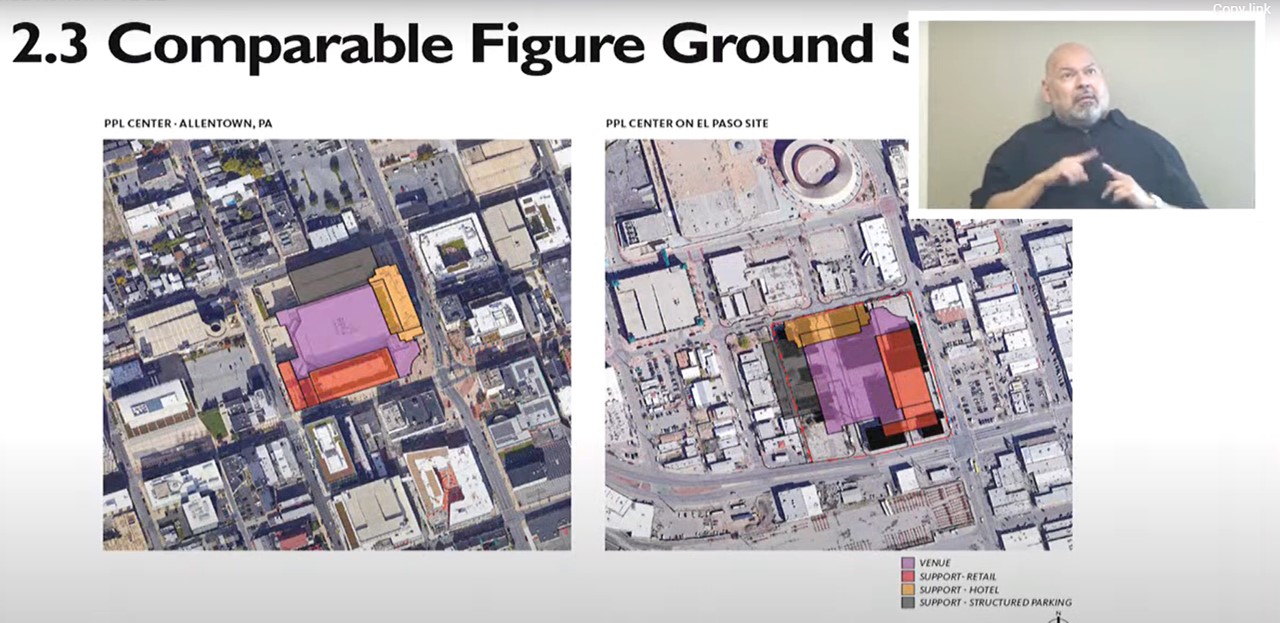This past Monday, September 12, on the five-year anniversary of the City’s attempt to bulldoze Duranguito, our City Council held a work session during which City Architect Daniela Quesada presented an update on the progress of the $798,000 feasibility study for the ongoing “Arena” debacle.
You can watch her 13-minute presentation here, starting at the 3:26 mark.
It is now clear that the City still plans to obliterate the Duranguito neighborhood, including 12 properties that the County nominated to the National Register of Historic Places, and complete the process of displacement and demolition begun in 2016. We have also learned the following:
1. Quesada explained that the “Steering Committee,” hand-picked by the City a few months ago and invited to meet with the consultants privately, helped craft the “Vision Statement and Guiding Principles for the study moving forward.” These Guiding Principles were then presented to the public at a subsequent meeting. Thus the City strategically manipulated the process to make certain that displacement and demolition would remain its Guiding Principles.
2. The City has abandoned its initial plan for a 15,000-seat venue and is now aiming for a structure in the range of 8,000 to 10,000 seats, in order to fill what they perceive as an entertainment “gap” in El Paso that cannot be filled by the “outdated” Don Haskins Center and County Coliseum.
3. Quesada presented a series of comparative comps for arenas and hybrid facilities built elsewhere, focusing in particular on the PPL Center in Allentown, Pennsylvania, built in 2014 with a seating capacity of 8,500 at a cost of $177 million, and the hybrid Toyota Music Factory in Irving, Texas, built in 2017 with an indoor seating capacity of 4,000 at a cost of $50 million. Of course, her comps fail to account for the double-digit inflation since 2014-2017, which would likely more than double their cost if they were built today.
4. Quesada then plots the PPL Center (see attached) and Toyota Music Factory on two separate maps, showing how nicely they would fit into the “Arena Footprint” in El Paso. Notice the appearance here of retail, hotel and parking facilities.
5. Quesada cites “the incorporation through adaptive reuse of some of the potential buildings on the site” without the slightest mention of the historical significance of the buildings or the plight of their residents, focusing instead on “data points” and metrics. She seems to be embracing Rep. Svarzbein’s suggestion that the City should incorporate parts of the historic buildings into the arena design.
6. Quesada tells us that the consultants are investigating “public-private partnership opportunities” and “any other kinds of funding mechanisms that we could pursue.” Thus, it is evident that the City will need funding beyond the $153 million that remain from the QOL bond–something on the order of hundreds of millions of dollars. Given that any attempt to issue certificates of obligation will be quashed by petition and that there are real questions about whether a public bond project can be supplemented by private funding, it will be interesting to see just how the City intends to pay for this dead horse.
Meanwhile, the City has been granted an deadline extension by the Texas Supreme Court to submit to them their first brief. The litigation in this lawsuit will extend well into 2023 and cost the City an astonishing sum.
On November 9, 2021, The City Council ordered “That the City Manager and the City Attorney be authorized to engage in discussions to identify various options for a resolution of the ongoing litigation included but not limited to the lawsuit entitled Max Grossman vs. City of El Paso, 8th Court of Appeals, Case #08-19-00272-CV, Matter No. 17-1001-171.001.001.”
More than ten months later, I am still waiting to be presented with options.

